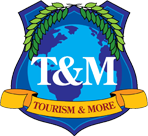Risk Identity and Management
September 2002
As the world becomes a more dangerous place, there is an ever-greater need to identify risk and manage the risk. People throughout the tourism, traveler and visitor industries have begun to ask themselves questions such as: How much risk is acceptable risk? Can I afford insurance to cover the costs of the risk? What are the risks upon which I need to concentrate? In travel and tourism we often need to consider the following risks: -Physical/Security risks to the client (visitor, tourist etc)
- Physical/Security risks to the staff
- Risks due to issues of health, for example food and water safety, to staff and clients
- Risks to the environment For example, will the event or tour damage the local ecology?
- Risks to the local culture, How much of a cultural impact does a large number of visitors have on a local culture?
- Risks to the business reputation of one’s company, industry, locale. Note here the connection between good customer service and risk management. Good risk management begins with good customer service.
To help you place the role of risk management in perspective. Tourism Tidbits offers you the following guidelines.
- In the travel and visitor industry there is no difference between safety and security risks. Both risks, if poorly managed, will destroy a tourism, travel or visitor industry. Instead of dividing these two types of risks, place them under the heading of “surety risk management”. Then, try to determine where the interactions are between all of the surety risks that touch your business, attraction or company. For example, security begins with good customer service. If your personnel do not listen and do not provide good customer service, they may be missing a major security flaw and exposing the entire business to unneeded risk.
- Take the time to look at how you will fund the losses should a risk materialize. Many tourism and travel entities assume that insurance will pay for all of their recovery costs. Yet tourism entities are always in the public eye. Thus, the assumption that insurance is enough may not be true. For example, what is the cost of a negative headline about your attraction or business? What is the public relations cost of having the press expose the fact that your company did not provide adequate training to employees? How long will it take you to overcome bad word -of-mouth advertising and can you afford the risk of negative publicity?
- Do a full risk assessment. Where are you most exposed to loss? What techniques are you using to minimize this (these) loss(es)? How often do you actually implement these techniques and can you demonstrate that you have monitored the results and compare these results with previous monitoring of results?
- Make a list of every peril to which your side of the tourism industry is exposed and then rank these perils. Risk management is only as good as the assumptions upon which you base your decisions. There is no way that you can eliminate every risk, thus there is a need to rank risks. First rank which risks are most likely to occur, then rank which risks would be most devastating to your office, business, or community. You might divide these risks into four categories. These being:
- Low probability of occurring and low impact should the risk occur
- Low probability of occurring and high impact should the risk occur
- High probability of occurring and low impact should the risk occur
- High probability of occurring and high impact should the risk occur.
Deal with those risks that have a high probability of occurring and a high-risk impact first. Those with a low probability of occurring and low impact should be deal with last. Rank each risk mentioned in the introduction found above.
- Then ask yourself what is exposure to loss of each of these listed risks. Will these risks result in a law suite, in loss of personnel or morale, property damage, business interruption or loss of reputation, or some combination of some or all of these factors? How well could your CVB or business withstand your worse case scenario?
- When doing risk-evaluations determine not only the recovery strategies but also your avoidance strategies. We often forget that the best way to recover from a risk is to avoid the risk’s occurrence. Evaluations should always include how much you can afford to self assure, a listing of the what software and hardware you need, what technical support is needed, what political preparations needed to be made, and how your budget would withstand the risk. For example, if you had to lay off employees, would you be able to rehire them? What is the cost of seeking out new employees, or low employee morale and of retraining?
- Never fail to monitor and evaluate the results of your risk assessment and maintain a time line of where you have been in the past, where you have corrected past mistakes and how changes in the political, economic, social and cultural environment have necessitated changes on your part. Consider what pro-active measures you need to take, what human measures you need to make,and what managerial techniques you may need to fine tune.
Risk management then in the travel and tourism industry is an on-going process that touches every aspect of the business, from the type of accounting practices used to the public’s satisfaction with your company, from managing costs to dealing with issues of fraud. Risk is a part of every aspect of the travel and visitor industry and cannot be avoided. To fail to recognize risk then is perhaps the greatest risk of all.



